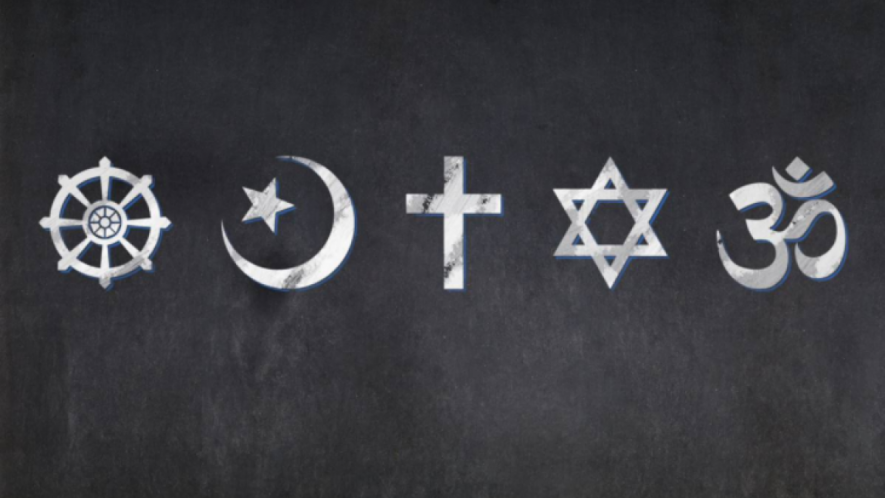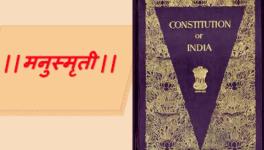Were Indian Elites Ever Secular Enough?

Image for representational use only.
If secularism were a human being and citizen of India, he would be the most battered and brutalised entity in the country. The ruling regime has pummelled it, the scion of the main opposition party has strangled it with his janeu. Other political parties are summoning its spirit with ritual incantations, chiefly Hindu. Some who trace their origin to the rationalist movement of Periyar have cut their tongue to fulfil irrational pledges to a local deity. The Shiv Sena, a party whose fascistic moorings were identified long before by scholars of the Left, is leading a “secular” coalition against its one-time ally—the BJP! This is the nutty tale of secularism in India in a nutshell.
It was in nineteenth-century Britain that the word secularism was coined by G.L. Holyoake. According to the Marxist political scientist Achin Vanaik, it is “an ideology or movement wherein social morality, formerly determined by the transcending principles of religion, now came to be determined by reason, and anchored to the good of men and women in this life”.
The word secular has no one-word counterpart in Hindi. In a society where life, from birth till death, was ordained by religion-sanctioned caste, it would be too much to ask for India to give birth to such a concept. But why did Europe, since it too had a structured church that penetrated the lives of its inhabitants? The answer lies in the development of capitalist modernity that served as the womb of scientific breakthrough, the attendant rise of Enlightenment, reason and rationality, and the industrial revolution that changed the way people thought about the world. Its main beneficiary, the bourgeoisie, saw no bounds to wealth accumulation and became most confident of ruling the world, declaring the end of history. Its chief losers, the proletariat, understood the uselessness of rallying to god’s church for respite, formed unions and “secular” associations in their fight against their exploiters.
This churning remained largely missing in underdeveloped capitalisms whose exploiters and exploited remained sufficiently attached to socio-religious mores and did not feel the real and painful birth pangs of the transition to capitalist modernity. One would not err to count India in the latter category.
And it is to Indian secularism that Ajay Gudavarthy dedicates his latest book, Secular Sectarianism: Limits of Subaltern Politics. (Ed. Gudavarthy, Sage publications.) The book is an edited volume consisting of ten chapters, divided into three parts. He begins his probing with a quote borrowed from philosopher Akeel Bilgrami, “The world is getting globally connected and locally divided.” He argues that the theatre of social conflict has shifted in India, from the governors to the governed to among the marginalised groups. Under such circumstances, the secular anvil is no more the preferred place for the subalterns to hang their political raiment. This miasma runs deep.
Gudavarthy identifies sub-caste conflicts within Dalits, Other Backward Classes and Dalits, Dalits and tribals, Muslims on the one hand and Dalits and OBCs on the other, and Muslims remaining steadfast in their social conservatism by refusing affirmative action in minority institutions, as the axes of intra-subaltern social conflict. There is truth to his claims. The Khairlanji massacre of a Dalit family by upwardly mobile OBCs, the teaming up of Jats and Dalits against the Muslims in Muzzafarnagar, and the failure of a pan-India Dalit-Muslim coalition attest to this.
The cause of such an intra-subaltern split, as identified by Gudavarthy, lies in the nature of social conflicts and the accompanying political mobilisations for their resolution that are “split between questioning [the] unequal and preserving the uneven”. In other words, political mobilisation against social discrimination in India has mostly questioned the hegemony of those above, without empathising with those below them in the social hierarchy. He calls this attitude secular sectarianism. Although tantalising and extremely close to the truth, there are certain hidden avenues that, if left unexplored, would undermine the perceptive strengths of this new concept.
First and foremost, the claim that the liberal-cosmopolitan elite was the reservoir of the secular ethos and the subalterns remained outside its pale is largely true. Yet the question needs to be inverted: Were the liberal-cosmopolitan elite secular enough? Enough to the extent, say, like the Kemalist elite in Turkey? Perhaps not. Kemalist Turkey was the best example of a top-down secularisation carried out relentlessly by the military-politician combine. In independent India, no such movement could be discerned. Apart from Nehru and his clique, the Congress party was the chief representative of the landed upper-caste elite. It failed to affect radical land reforms—the fundamental duty of the bourgeoisie—as it did not want to release progressive energies from below.
Landlordism bookended class/caste struggle because most landlords belonged to the forward or upper caste or elite class. Half-hearted reform only benefitted the middle-peasant castes, who later joined and spearheaded the Mandal agitation and became secular sectarians.
Those much down the social ladder, the Dalits and tribals never found a place of honour in the sectarians’ scheme of things. It would be pertinent to interrogate emancipatory politics by posing some statistics. Despite a nationwide popular upsurge of what is dubbed the “second democratic wave”, the percentage of Dalits owning 2.5 acres or more irrigated land with at least one irrigation equipment is at a paltry 0.24%. It is 0.19% for the tribals and the percentage of Dalit households that earn more than Rs. 10,000 per month is just 0.86%. Educationally, only one in every ten students is either an SC or ST despite collectively accounting for a solid 24.4% of the Indian demographic dividend (as per the last census). In higher education, Dalits account for only 11% of students in the 20-24 age group.
Second, the emergent sectarians have no interest in either the annihilation of caste or an extended form of class struggle. Take Bihar. The state marked a tremendous political rise of backward classes on the eve of the Mandal agitation, yet the victors drove roughshod over the land question. Lalu Prasad Yadav rejected land reforms in 1990 because “balancewa bigad jayega” (land reforms would upset the prevailing social order). Later, his secular sectarian successor, Nitish Kumar, shelved the report of the D Bandopadhyay Commission, 2006, which called for the transformation of the lives of two of the most vulnerable agricultural classes: the tenants at will and the landless.
The commission recommended recording the names of tenants at will in the land records, a ceiling of 15 acres of land per household and ensuring the surplus land goes to the landless at 0.66 to 1 acre per household. All this was symptomatic of the power of the landed elite in Bihar, before whom the Mandalites have for long kowtowed. The Left figures in Gudavarthy’s list as one of the secular sectarians, but which fared much better on the class front. In West Bengal, out of the total beneficiaries of land reforms, 30.5% belonged to a Scheduled Caste, and 11% to a Scheduled Tribe (SC and ST). In Kerala too, the rural poor, overwhelmingly SC, benefitted from the land reforms as they received ownership of homestead lands. However, a generous land ceiling to the tune of 25 acres per household when the average size of landholding remained 1.25 acres failed to push land reforms in radical directions in both cases.
True to the secular sectarian spirit, non-Left parties bragged about their caste, moving the focus from annihilation to the secularisation of caste. Some aligned with Hindutva and presented Muslim supporters with the BJP scarecrow every five years.
Part I of the book is an ensemble of chapters on caste and gender. P. Thirumal and Dickens Leonard bring to bear the relevance of the Rohit Movement and its impact on the Dalit imaginary. In a language that might turn off a lay reader, they make two broad points. First, the Rohit movement exposed the “limits of philosophy” to “handle the social”. It is difficult to pin down which philosophy are they referring to and their disagreements. However, a wager is warranted. If philosophy is redundant to understand the social, then one wonders why Dr. BR Ambedkar converted to Buddhism, considering “political Buddhism” in closed-door Burma had reached fascistic proportions in the 1950s.
Second, they argue that the movement necessitated an exit from the modern Hindu mind, which in its “secular avatar” is the Left and in the communal, the Hindu Right. Unfortunately, in the 2019 election, the Right led by the BJP increased its SC vote share from 24% in 2014 to 33.5%. The Bahujan Samaj Party marked a decrease in its SC vote share from 14% in 2014 to 11% in 2019. The recent sobering of the BJP in West Bengal, where it had gained tremendously in the scheduled caste pockets, especially among the Matuas and the Rajbanshis, has been mainly because of the minute political management of their grievances by the Trinamool Congress. No pan-India Dalit struggle has ever motivated them, at least politically. Although the Rohit movement was emancipatory in its extreme, it did not, as the authors insist, break new political ground against the Hindu Right or otherwise.
The second chapter builds substantially on Gudavarthy’s thesis—intra-subaltern conflict. Without a doubt, the Subaltern Studies tradition has failed miserably to account for material contradictions at the grassroots between subaltern groups, especially because of growing poverty, extremely skewed sources of income, and a two-decade-long agrarian impasse. Suratha Kumar Malik brings this out in his case study of the Dalit-tribal conflict conducted in Bisipara and Kandhamal in Orissa. The post-independence assertion of the Panas, the Dalit group, riding on the wave of reservations, led to the disenchantment of the Kandhas, the tribal group. The erstwhile synergy of dependence of the former on the latter gave way to a conflictual existence over local resources and political patronage. Implicit in this case study is the notion of “immediacy of power struggle” which marks vast swathes of the Indian social terrain in the absence of a clear-cut class conflict.
Part II is devoted to the crucial issues of religious minorities. Samir Gandesha shows how the Hindutva project has raided the anti-colonial armoury of the Left and turned it from a socioeconomic critique of imperialism to a cultural-political renaissance of the Virat Hindu. This has allowed the right-wing to champion the conversion of religious minorities like never before, therefore essentializing and securitising the Hindu identity. Afroz Alam’s intervention on the Uniform Civil Code from the standpoint of the Pasmanda (Backward) Muslims is one of the most significant contributions of the title.
Drowned out between the cries of Allah-hu-Akbar and Jai Shri Ram, the voice of the backward Muslims is seldom heard. For Alam, social questions in both communities are framed by the upper-caste elite—the Ashrafs and the Savarnas. For instance, the unrelenting insistence on retaining Muslim personal law has its source in retaining family property by the male line thereby preserving the patriarchal privileges of the Ashrafs. A genuine resolution could only be through a thorough interrogation of the vested interests of the Ashrafs, who are patriarchal and condescending towards the Pasmandas.
Part III of the book somewhat breaks from the main theme of secularism sectarianism. Titled Left and its Fragments, the first chapter by Anindya Purkayastha and others is an extended review of three popular books on the Indian Left. The authors implicitly argue for a populist Left that transcends democratic centralism and is more attuned to identity politics since it is more pronounced than class politics in the era of globalised finance. In the last chapter, Dhritiman Chakraborty ends with a sympathetic critique of Left governance in Bengal. He argues that if the Left has to socialise its praxis it must “politicise the hierarchic social”. Reform and revolution must go hand in hand wherein the most immediate and the Utopian find places of honour in the Left political imaginary.
The book is a fine addition to the debates around Indian secularism. It provides cues to the questions about its failure, limited popular appeal, and recent descent into sectarianism. It deserves to be read widely by serious scholars and students of modern Indian politics.
The writer is a research scholar with the Department of World History, University of Cambridge. The views are personal.
Get the latest reports & analysis with people's perspective on Protests, movements & deep analytical videos, discussions of the current affairs in your Telegram app. Subscribe to NewsClick's Telegram channel & get Real-Time updates on stories, as they get published on our website.
























